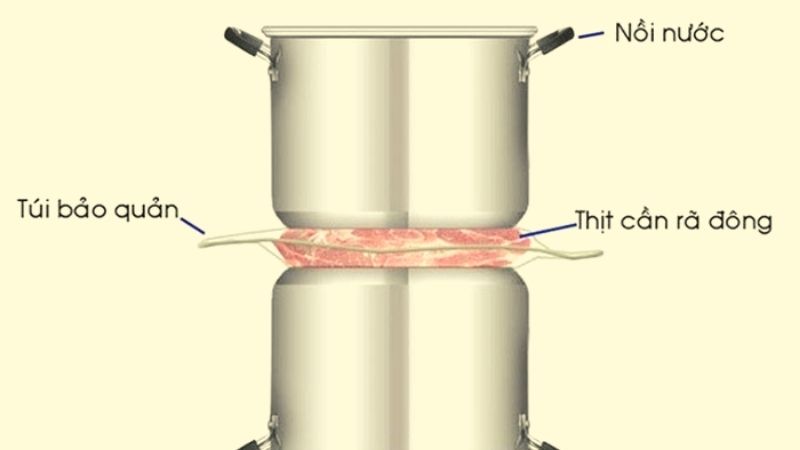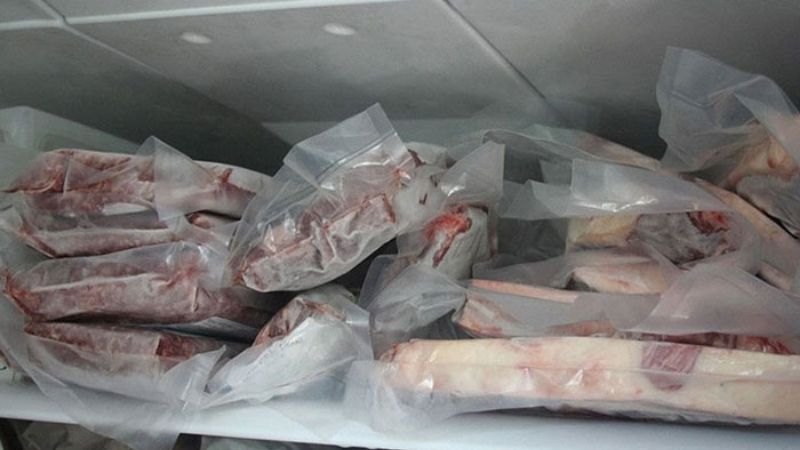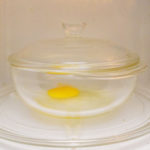Nowadays, with busy and hectic lifestyles, many families opt to gradually use meat over several days and preserve it for a long time by storing it in the freezer.
However, when cooking, women often spend a lot of time thawing meat and make mistakes in the process of refrigerating meat, resulting in a loss of nutrition and potential health risks.
In this article, I will guide you through the three most common ways to quickly thaw meat, along with some tips on meat preservation.
1 Thawing meat with an aluminum pot
Aluminum is an excellent heat conductor, making it an effective tool for thawing meat. “Thawing boards” have been invented based on this principle and are widely available online and in supermarkets.
The method is simple: take two clean aluminum pots or a large metal knife. Place the tightly wrapped meat on top of the upturned pot, and fill the remaining pot with cold water (or no water) and place it on top of the meat. Be careful in placement or let the pot lean against the wall to avoid spilling.
After about 10 minutes, the meat will be thawed and ready to be cut into small pieces for cooking. This method ensures a quick thawing process without sacrificing the nutritional value of the meat.
More details at:
 Thawing meat with aluminum pot
Thawing meat with aluminum pot
2 Thawing with a microwave
Place the meat in the microwave and set it to medium power for about 4 to 5 minutes for a 400g piece of meat. Modern microwave ovens typically have a defrost function with fast defrosting time and food safety features.
This method is quick, but it’s essential to adjust the time and temperature based on the type of meat. Keep in mind that thawing with a microwave may lead to a duller taste and loss of nutritional value. Additionally, it’s crucial to cook the meat immediately after thawing to prevent bacterial contamination.
 Thawing with microwave
Thawing with microwave
3 Thawing with water and sugar
This method may seem unusual, but it’s commonly used by housewives. Mix cold water with boiling water in a ratio of 5:1 to obtain water at approximately 40 degrees. Alternatively, tap water can be used, though it is less effective.
Add two tablespoons of sugar to the water and stir well. Submerge the frozen meat in the water, and it will soften within about 7 minutes. This method is quick, simple, and ensures faster thawing while maintaining tender and flavorful meat.
Salt or baking soda can also be used instead of sugar, as they have the same effect.
 Thawing with water and sugar
Thawing with water and sugar
In addition to sugar, ginger, salt, cold water, etc. can also be used for effective thawing at home.
4 Notes on thawing food
- Do not leave meat at room temperature for too long before thawing to avoid bacterial contamination.
- Only thaw meat when needed for immediate use in cooking.
- Cook the meat immediately after thawing to prevent bacterial contamination.
5 How to preserve meat in the refrigerator
Although meat can be preserved longer when stored in the refrigerator, prolonged storage leads to nutrient loss and bacterial growth. Therefore, it’s essential to follow the following tips for proper meat preservation.
 How to preserve meat in the refrigerator
How to preserve meat in the refrigerator
- Always wash your hands when handling fresh meat to avoid bacterial contamination and clean the meat before thawing.
- For easier storage and thawing, cut the meat into appropriate pieces before storing.
- Place the meat in a clean, tightly sealed box or bag to prevent bacterial spread and refrigerator odor.
- Do not store raw meat and cooked meat together to prevent bacterial and parasite transmission.
- Regularly clean the refrigerator to remove bacteria and keep the meat inside fresh.
- Remember to note the date of meat purchase and the start date of meat preservation in the refrigerator to avoid forgetting thawed meat.
6 Recommendations from the health department on meat preservation time in the refrigerator
For the freezer
- Beef: 2 – 3 months
- Whole poultry: 1 year. Ground chicken: 3 – 4 months.
- Chicken thighs, wings: 9 months
- Pork: 2 – 3 months. Cooked pork: 4 – 12 months. Cooked pork: 2 – 3 months.
- Pork products (smoked meat, sausages, ham, sliced meat): 1 – 2 months.
For the refrigerator
- Raw beef: 3 – 5 days, ground beef: 1 – 2 days, beef dishes: 3-4 days
- Raw poultry (whole, thighs, wings, meat, giblets): 1 – 2 days. Cooked poultry: 3 – 4 days.
- Raw pork: 3 – 5 days, ground pork: 1 – 2 days, pork dishes: 2 – 3 days.
- Uncut sausages or sliced meat in unopened packages: 2 weeks. Once opened, it should only be kept for 3 – 5 days.
- Smoked meat, cooked chilled meat: 7 days.
- Whole ham: 3 – 5 days and sliced ham: 3 – 4 days.



































